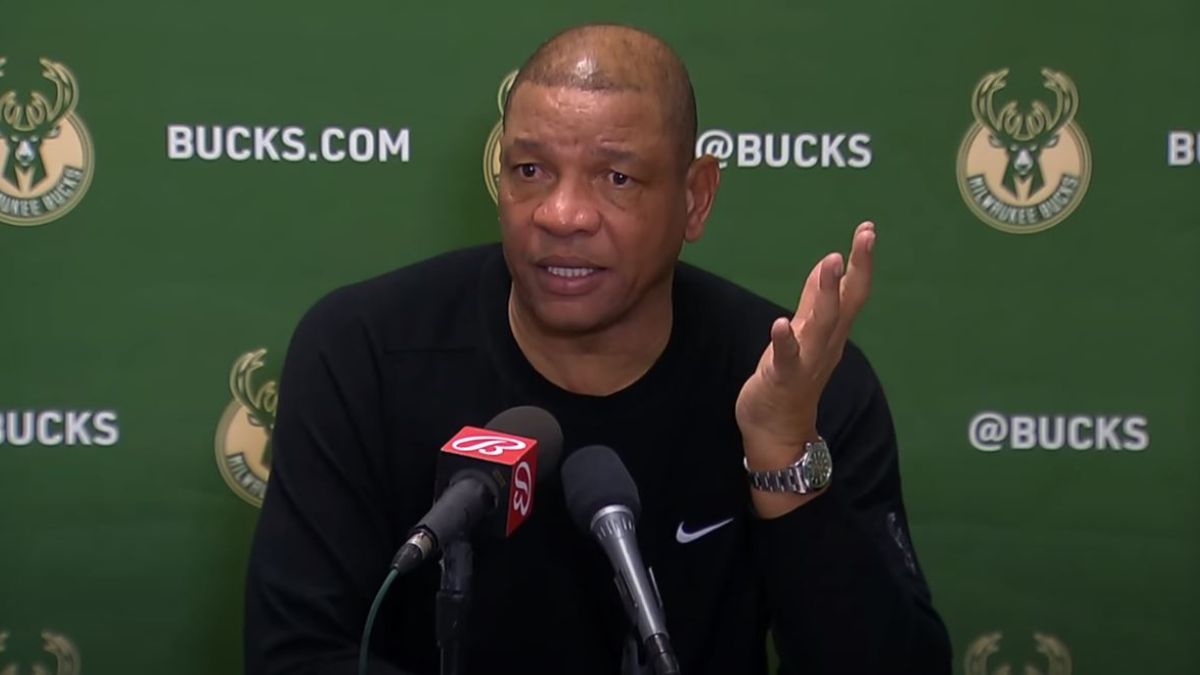Doc Rivers, the new coach of the Milwaukee Bucks, has led the team to a four-game losing streak in his first five games in charge of the team.

Therefore, despite the fact that he has only been with the franchise for a short period of time, the veteran coach has already provided a number of explanations for Milwaukee’s shortcomings.
In the middle of the season, Rivers was brought in to help the Bucks (33-18) improve their defensive woes. But, with 51 games under their belt, the team’s defensive rating is only 116.3, placing them in 18th place.
The Bucks’ defensive rating is still 14th (115.8) since Rivers was hired. Milwaukee’s offensive rating dropped from fourth (119.6) to 24th (112.3).
So, under Rivers’ direction, the team has seen only a slight improvement in their defensive performance while experiencing a significant decline in their offensive performance. However, the former NBA champion asserts that he is not to blame for the difficulties that the Bucks are experiencing.
excuses Doc Rivers gave for Milwaukee Bucks’ decline:
1: Putting in excessive effort on defense
A veteran coach who was brought in for defensive purposes blamed the Bucks’ 1-4 slump on playing too hard on defense, despite the fact that he was brought in for defensive purposes.
In order for Milwaukee to achieve its goal of winning a championship, the team will need to consistently play defense at a championship level. On the other hand, victory and offensive production cannot be sacrificed in order to achieve this goal.
If the Bucks want to be competitive, Rivers will need to figure out how to assist the team in achieving success on both ends as soon as possible rather than waiting until later.
2: Altitude
On Sunday, the Bucks were defeated by the Utah Jazz (26-26) on the road by a score of 123-108. Doc Rivers attributed the loss to the fact that the Bucks were playing at a higher altitude.
Due to its high altitude—the state average is 6,100 feet above sea level—Because of this, there is a general perception that the Jazz have an extra home-court advantage over teams that play at lower altitudes.
…….The higher altitude requires opposing players to acclimate, which may result in exhaustion or dyspnea. However, the Jazz have yet to win any of their home games this year (17-7). Consequently, it is not impossible to succeed in Utah.
3: Fatigue and Injuries
Milwaukee’s starting record of 1-4 under his leadership Doc Rivers blaims to injuries and fatigue that were brought on by the team’s five-game road trip. He added that some of his players have been forced to take on excessive workloads due to injuries that they have sustained.
It is possible that Rivers is correct in his assessment of injuries, given that the Bucks have had a number of key players appear on the injury report over the course of the last five games. Among those who are unable to play are superstar point guard Damian Lillard (ankle), star wing Khris Middleton (ankle), and starting center Brook Lopez (personal).
With each team playing 41 games away from home during the season, travel is an inevitable part of the National Basketball Association (NBA) experience. That being said, both players and coaches are accustomed to being away from their homes for extended periods of time.
4: Different time zones
Time zones was the third reason that Doc Rivers offered for his team’s defeat at the hands of the Jazz. While the state of Utah adheres to Mountain Standard Time, Dallas functions according to Central Standard Time. On the other hand, Dallas is only one hour ahead of Austin, which is a relatively minor difference.
As an additional point of interest, every NBA team travels during the course of the season. Therefore, it is important for players and coaches to know how to adjust to the different time zones that come with traveling.
5: Makers of schedules
Doc Rivers also assigned blame to the schedule of his team. After defeating the Dallas Mavericks by a score of 129-117 on the road the previous night, the Bucks played in Utah on the second night of a back-to-back series following their victory.
Back-to-backs are a common occurrence in the National Basketball Association (NBA), and each team has approximately the same number of back-to-backs during each season.
As a result, players and coaches ought to have become accustomed to the hectic schedule of 82 games that the league has by this point.
Related news: Bucks have hired Doc Rivers as their coach